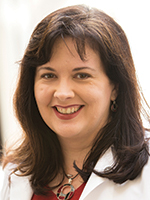February 2024—Anatomic and clinical pathology reporting—what’s working, what’s missing. Three pathologists (all board certified in informatics) and representatives of three information system companies met online Dec. 19 with CAP TODAY publisher Bob McGonnagle to talk about reporting needs, the changes, what’s optimal. The first half of their discussion begins here; the second half will be published in the March issue.
CAP TODAY’s guide to anatomic pathology computer systems begins here.

Avunjian
Suren Avunjian, anatomic pathology and laboratory information systems are converging. It seems like the dialogue we have for the CAP TODAY LIS roundtable and the AP computer systems roundtable is almost one and the same. Can you comment on how AP and LIS are coming together?
Suren Avunjian, co-founder and chief executive officer, LigoLab Information Systems: In recent years we’ve seen a significant expansion of services offered by pathology laboratories, which have been extending their capabilities, with an emphasis on women’s health and molecular diagnostics. It reflects an evolution toward a more comprehensive clinical service model.
Pathologists and laboratory professionals have recognized the inefficiencies and potential for errors when patient samples are divided among specialized facilities, so they are increasingly offering full-service diagnostics to provide a continuum of care that is patient centered and cost-effective.
A primary driver of this integration is the demand from health care providers for a unified diagnostic report that encompasses all necessary tests, from histopathological exams to molecular analyses. By converging anatomic pathology and laboratory information systems, we can eliminate redundancies, facilitate faster decision-making, and support a more holistic approach to patient care.

Dr. Carter
Alexis Carter, the needs and uses on the anatomic and clinical sides are converging, such as with data capture, data display, and interfaces for instruments in the clinical laboratory and in histology and anatomic pathology. Do you agree?
Alexis Carter, MD, physician informaticist, pathology and laboratory medicine, Children’s Healthcare of Atlanta: Yes, especially with molecular labs, which have to be able to use the clinical pathology and anatomic pathology system if they’re split. Our needs for data capture are growing, especially for AP in a discrete manner so people can pull back their data. For molecular data we have people pleading to have that be discrete so they can manipulate it in the EHR.
Michelle Stram, tell us about the IT needs in your work and your opinion of the systems available to you.
Michelle Stram, MD, clinical assistant professor, Department of Forensic Medicine, New York University Grossman School of Medicine, and medical examiner, New York City Office of Chief Medical Examiner: At the OCME, we have a centralized laboratory that supports multiple medical examiner borough offices in the New York City system. Our needs are similar to those of any multisite hospital system. We need careful specimen tracking and to see the status of our histology and the processing of any specimens at any point in time, regardless of which site we’re at. When we are able to bring on whole slide imaging, it will also remain centralized.
We have a homegrown system, and our AP and CP sides are broken apart, which is suboptimal because our histology lab uses the CP LIS, so it’s hard for our AP pathologists to see what’s happening in the toxicology laboratory or even in pathology. I prefer the model that more integrated systems use, or that a smaller medical examiner’s office that is part of a university hospital uses, which is typically the university hospital’s LIS and often covers AP and CP services. Medical examiner offices have an additional challenge because there’s a strict need for traceability on the medicolegal side. But it’s still closer to what a hospital is already doing in terms of being able to say where a specimen is and who has touched that specimen at each point in time. We could learn a lot from our colleagues at academic institutions with integrated systems, rather than having completely separate AP and CP systems, as we do at my office.
Joe Nollar, can you comment on the convergence of AP and CP and how things are changing in terms of how reporting is shared, displayed, and dispersed?
Joe Nollar, associate vice president of product development, XiFin: It’s important that all the data the pathologist needs for a patient workup is easily available in the LIS—that’s driving the convergence. We are getting requests to handle CP and AP or to integrate with the lab’s CP solution to collect the data.
Clients are also asking us for the ability to merge molecular data with the AP and CP into a single, comprehensive summary report and deliver those results to the EHR.
On the reverse side, we want to receive into the LIS the preliminary clinical data that may be available in the EHR that will assist pathologists in things like their overall assessments. It’s a two-way street in terms of receiving and presenting interface data that is useful to the pathology team and delivering comprehensive diagnostic results back to the treating physicians.
Beth Eder, how far along are we on this road map? If we took 100 anatomic pathology labs, how many are in the optimized state Joe explained?
Beth Eder, director of product management, Orchard Software: Many of us are already there. We’re all getting these requests from clients. As an LIS vendor we’re concerned about patient safety, integration, adding efficiencies to workflows, bringing on digital pathology, and the ability to look at big data. When you have all that mixed in, you’ll be able to do an analysis of the patients you’re seeing to improve the work you do. The goal is to make sure patients are taken care of and clinicians are happy with the workflows and efficiencies.
Suren Avunjian, you are being asked for the same?
Suren Avunjian (LigoLab): Yes. Ten years ago, Dr. Thomas Tiffany of PAML [Pathology Associates Medical Laboratories, acquired by Labcorp] tapped us to help harmonize their data to generate the types of consultative reports Joe describes. We’ve been unifying clinical, AP, and molecular data into one system for pathology, to ease the pathologist’s workflow. Before that, it would take pathologists about 30 minutes to put together a comprehensive report, copying and pasting data from one system to another and fiddling with an image. Modern systems can compile it all.

Richard
Diana Richard, when you meet a new customer or a new prospect and talk about systems and needs, do the customers know what they’re asking for? It’s easy to articulate the ideal state of a system, but it’s another to realize what it will take to get there.
Diana Richard, senior director, pathology and strategic development, XiFin: I agree. Most pathology groups do not understand the value of the data they are curating, so they don’t think about what it means to create a cohesive report with dynamic diagnostic elements, such as progress timelines or consolidation of cross-specialty feedback, unless their clients are asking for it. When we talk about digital pathology or studying patient trends over multiple events or specific disease states, having this information curated at a single point of reference or source of truth is valuable, not just for the patient but for sharing information with hospital systems.
Joe Nollar, what should pathologists know about what they need?
Joe Nollar (XiFin): It is up to the implementation team of any LIS to help clients understand and achieve their objectives. Sometimes they don’t know what some of those objectives are. We can help guide clients to understand the values and pitfalls they need to be aware of. It could be understanding the value of their data, such as looking at the patient reports they’re asking you to create and saying we can add value to the reports if we do summary tables or present diagnostic data differently. We can talk about bringing together diagnostic results to create more comprehensive summary reports to aid treating physicians—for example, hematopathology summary reports that incorporate a comprehensive analysis of FISH, flow, molecular, and cytogenetics results.
 CAP TODAY Pathology/Laboratory Medicine/Laboratory Management
CAP TODAY Pathology/Laboratory Medicine/Laboratory Management
